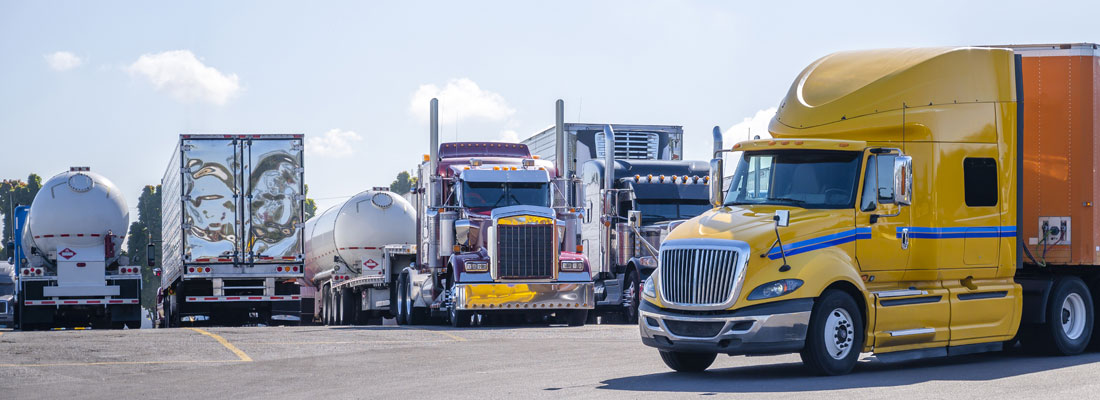For drivers travelling in Canada or the United States, it is important to understand how to use personal conveyance to comply with regulations. This blog demystifies this hours-of-service exception which differs in the United States and in Canada.
What is personal conveyance?
Personal conveyance (PC) is the moving of a commercial motor vehicle for personal use while off duty. Certain criteria must be met for personal conveyance to apply.
Personal conveyance in the United States
In June 2018, the Federal Motor Carrier Safety Administration (FMCSA) released a guidance on personal conveyance. The updates allow drivers to operate a commercial motor vehicle (CMV) for personal conveyance, even when it is laden. Personal conveyance applies whenever the driver is off-duty and no longer performing work for the carrier.
The guidance clarifies under what circumstances drivers can use the PC mode. This includes time spent traveling to a nearby, reasonable, safe location to obtain required rest after loading or unloading, regardless of whether the driver exhausted his or her HOS. It should be noted, however, that drivers will still be required to respect the minimum rest period that begins when arriving at the rest stop, before returning to on-duty status.
Updates also include other personal uses of the CMV, such as travelling to en route accommodations (such as a motel or truck stop), to restaurants or entertainment facilities, or even moving a CMV at the request of a safety official during the driver’s off-duty time. Additional examples and a more detailed explanation can be found on the FMCSA website.
Nearest reasonable, safe resting area
“The movement from a shipper or receiver to the nearest safe resting area may be identified as personal conveyance,” says the FMCSA. The nearest rest location is based on the distance from the driver’s position, regardless of his final destination. This means that if the nearest rest location is in the opposite direction from a driver’s final destination, that is where he must drive. If a driver goes to the nearest resting area and is unable to stop there and must proceed to another location, he may continue to drive under personal conveyance and annotate the reason on his device.
Cases that do not qualify for personal conveyance
It is sometimes difficult to identify when a situation qualifies for personal conveyance and the FMCSA has said they will evaluate on a case by case basis. For instance, a driver can use the CMV under personal conveyance to drive from the terminal to his home, but not to a vehicle maintenance facility or garage. Other restrictions include:
The movement of a CMV in order to enhance the operational readiness of a motor carrier.
After delivering a towed unit, the driver returns to the point of origin under the direction of the motor carrier to pick up another towed unit. For example, the driver of a tow truck has an empty flatbed and has 30 minutes left until he must take a rest period. He cannot use personal conveyance to drive to the next pick up location to save hours. He must remain on duty and is subject to the HOS rest requirements.
Time spent traveling to a motor carrier’s terminal after loading or unloading from a shipper or a receiver.
Personal conveyance in Canada
In Canada, rules regarding personal conveyance are slightly different. The hours-of-service regulations limit drivers to 75 km of PC per day. Furthermore, the vehicle must be unloaded and trailers unhitched.
With paper logs, drivers use the off-duty status to travel under personal conveyance and must keep track of the distance traveled with odometer readings and subtract that distance from the total distance traveled for the day. With an ELD or AOBRD device, the distance is calculated automatically and drivers can annotate as they would while driving in the U.S.
Beware when crossing the border
If you have business on both sides of the border, be sure to know the differences in personal conveyance requirements. Both the rules and law enforcement are different. Just because your use in the U.S. was legal does not mean it will be when you cross the border. The fact that the commercial vehicle must be unloaded and the trailer unhitched in Canada can complicate things. For example, if you use personal conveyance in the U.S. (off-duty status) while your truck is loaded, and then cross over to Canada, your personal conveyance segment will be considered driving by the Canadian road inspector calculating the hours of service.
The best way to record and track hours of service, including exceptions such as personal driving, is by using an electronic logging device (ELD). You get detailed visibility into drivers’ hours of service and receive alerts to avoid violations, allowing you to ensure your fleet’s compliance.










